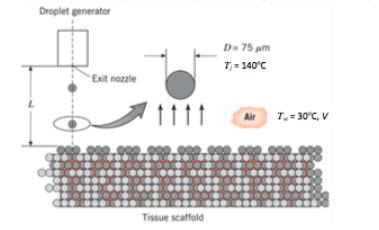Tissue engineering involves the development of biological substitutes that restore or improve tissue function, Once manufactured, engineered
Question:
Tissue engineering involves the development of biological substitutes that restore or improve tissue function, Once manufactured, engineered organs can be implanted and grow within the patient, obviating chronic shortages of natural organs that arise when traditional organ transplant procedures are used. Artificial organ manufacture involves two major steps. First, a porous scaffold is fabricated with a specific pore size and pore distribution, as well as overall shape and size. Second, the top surface of the scaffold is seeded with human cells that grow into the pores of the scaffold. The scaffold material is biodegradable and is eventually replaced with healthy tissue. The artificial organ is then ready to be implanted in the patient.
The complex pore shapes, small pore sizes, and unusual organ shapes preclude use of traditional manufacturing methods to fabricate the scaffolds. A method that has been used with success is a solid freeform fabrication technique whereby small spherical drops are directed to a substrate. The drops are initially molten and solidify when they impact the room temperature substrate. By controlling the location of the droplet deposition, complex scaffolds can be built up, one drop at a time. A device similar to that of Problem 7.71 is used to generate uniform, 75-μm-diameter drops at an initial temperature of Ti = 150°C. The particles are sent through quiescent air at T∞ = 25°C. The droplet properties are ρ = 2200 kg/m3 , c = 700 J/kg. K.
(a) It is desirable for the droplets to exit the nozzle at their terminal velocity. Determine the terminal velocity of the drops.
(b) It is desirable for the droplets to impact the structure at a temperature of T2 = 120°C. What is the required distance between the exit nozzle and the structure, L?

Step by Step Answer:

Fundamentals of Heat and Mass Transfer
ISBN: 978-0471457282
6th Edition
Authors: Incropera, Dewitt, Bergman, Lavine




